The RM Sotheby's press release calls it "the most important Aston Martin ever produced." Only five were made, and between them they won the 24 Hour of Le Mans and the World Sportscar Championship in 1959. The Aston Martin DBR1 is headed for auction at Monterey next month and expectations are of a sale price in excess of $20 million.
The DBR1 also won the 1000 km Nürburgring race in 1957, 1958 and 1959, forever validating it had found the ideal balance of performance and handling to conquer endurance racing on the most demanding track in the world. This car won the third of those victories and helped dethrone Ferrari for the world title in 1959.
In just a handful of years, Aston Martin's star rose dramatically, and it all started with the Aston Martin DBR1. This car is DBR1, chassis 1.
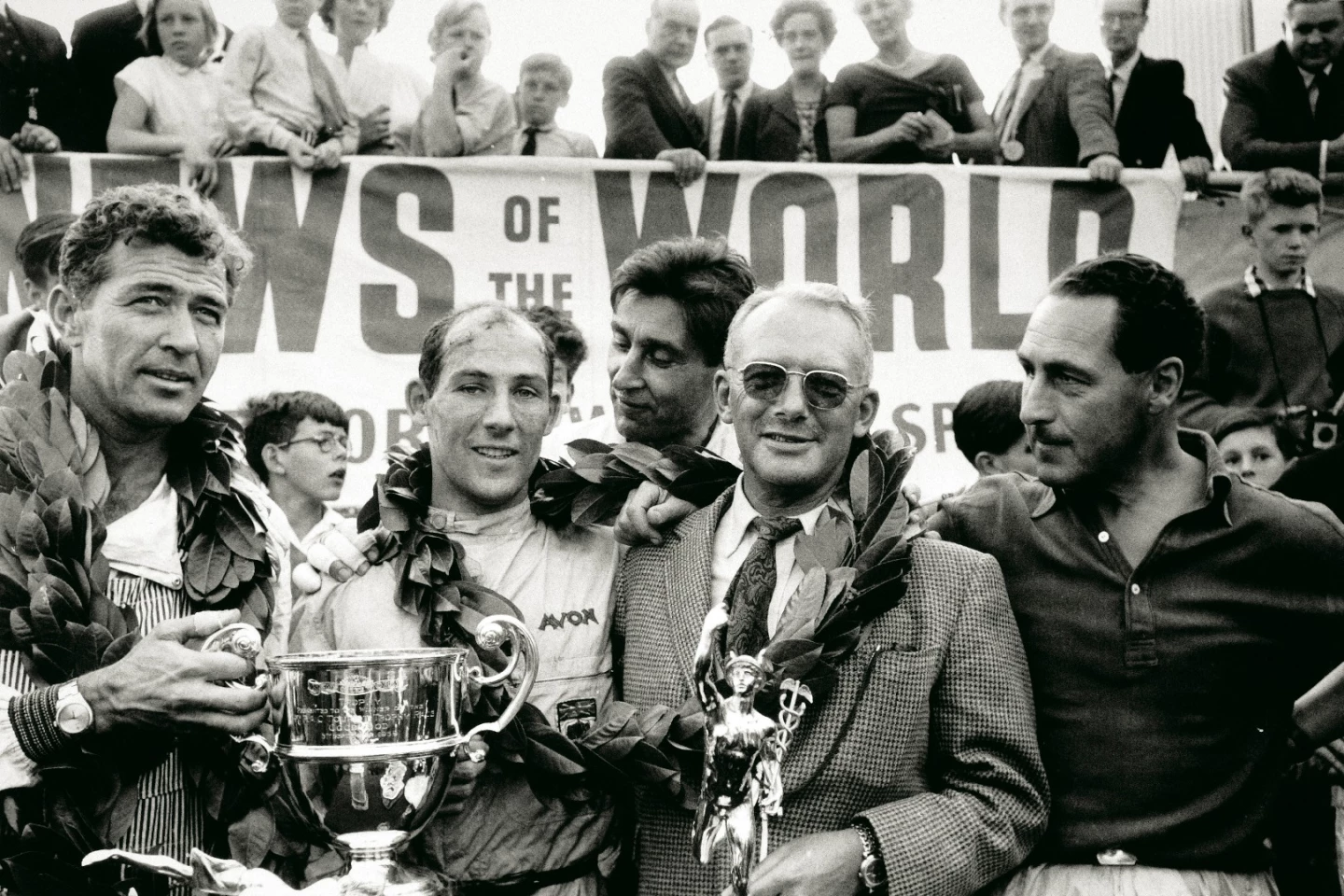
Sir David Brown would these days be described as a serial entrepreneur. The story of his success is spectacular and Aston Martin is just one of many of his business triumphs across many industries and decades. Brown had already demonstrated his magic touch many times prior to WW2 as he turned his grandfather's machine tool business into an industrial giant, and pioneered new techniques and technologies.
Inside a decade, Brown demonstrated his powers by taking his new found marque to global first-tier recognition. Upon purchasing Aston Martin in 1947, he set set lofty goals for the company, one of which was winning the 24 Hours of Le Mans. A win in the world's most famous race guaranteed a marque's performance credentials and nothing less would do.
Aston Martin finished 7th in its first attempt at Le Mans under DB proprietorship in 1949, 5th & 6th in 1950, 3rd, 5th & 7th in 1951 and 7th in 1952. The DB cars were in the hunt, but were underpowered by comparison to the lead cars of other sports car manufacturers – the invention of the radar gun in 1953 offered some insight into just how great was the speed differential.
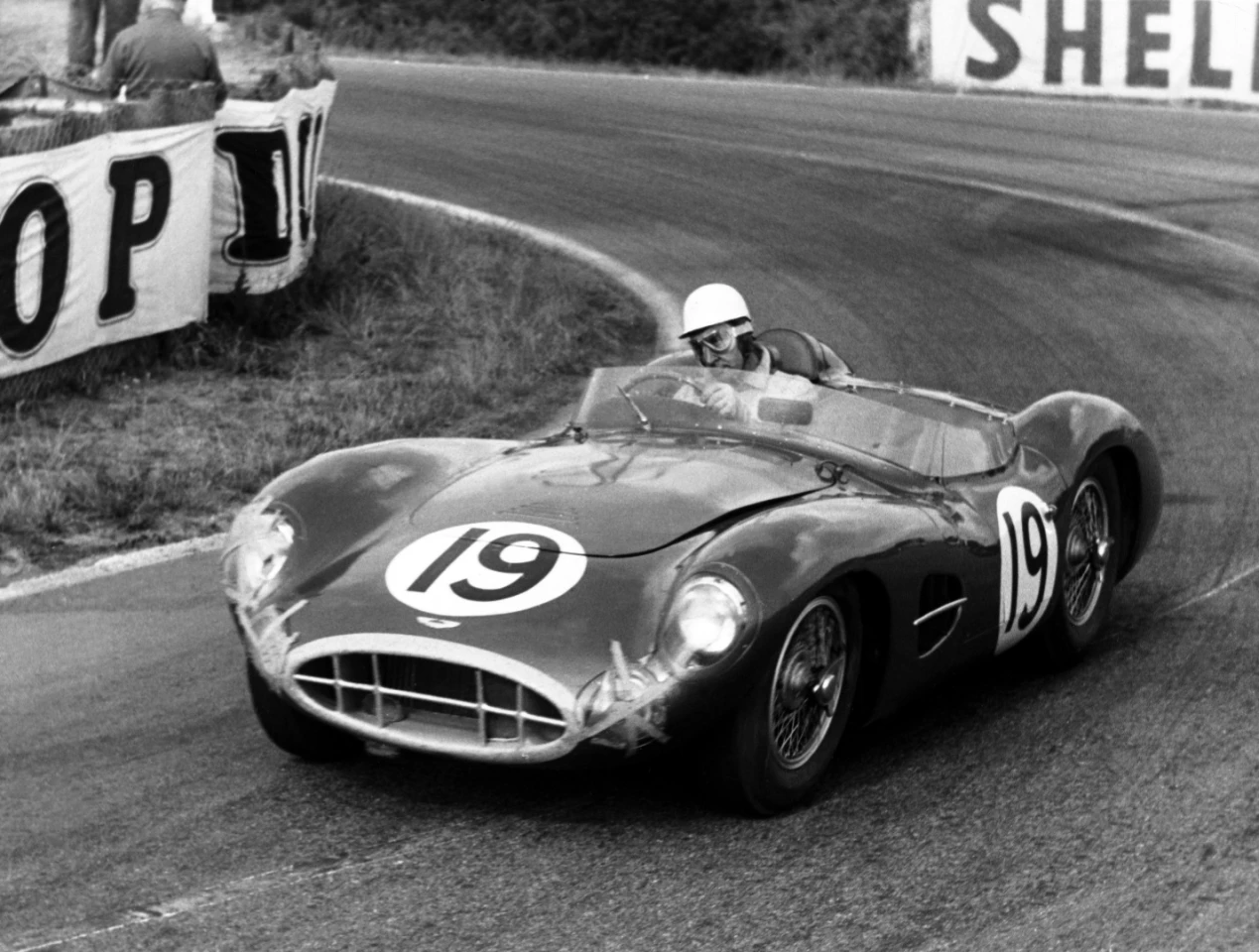
Topping out at just 212.2 km/h (132 mph) on the Hunaudières Straight at Le Mans that year, the DB3S Aston Martin was well down on speed compared to any of the other cars: Cunningham C-5R(249.1 km/h); Alfa Romeo 6C (245.9 km/h); Jaguar C-Type (244.6 km/h); Ferrari 340 MM (242.1 km/h) and Talbot Lago T26S (239.1 km/h).
Clearly the Aston Martins had the roadholding, braking and reliability to make up some of that deficit, and outpace most rivals over the distance, but they seemingly didn't have the grunt to win. Even then, the DB3S nearly got the job done in both 1955 and 1956 when it placed second at Le Mans in both years. But no cigar!

Aston Martin's race cars prior to the DBR1 had been developed from road models but when regulations were broadened for Le Mans in 1956, allowing pure race cars, the DBR1 was conceived. David Cutting (above with pencil in mouth), had just been appointed by Brown (left behind model) to the role of chief designer in Aston Martin's Special Projects Office and he was given a clean sheet to design the DBR1, the company's first true racing car.
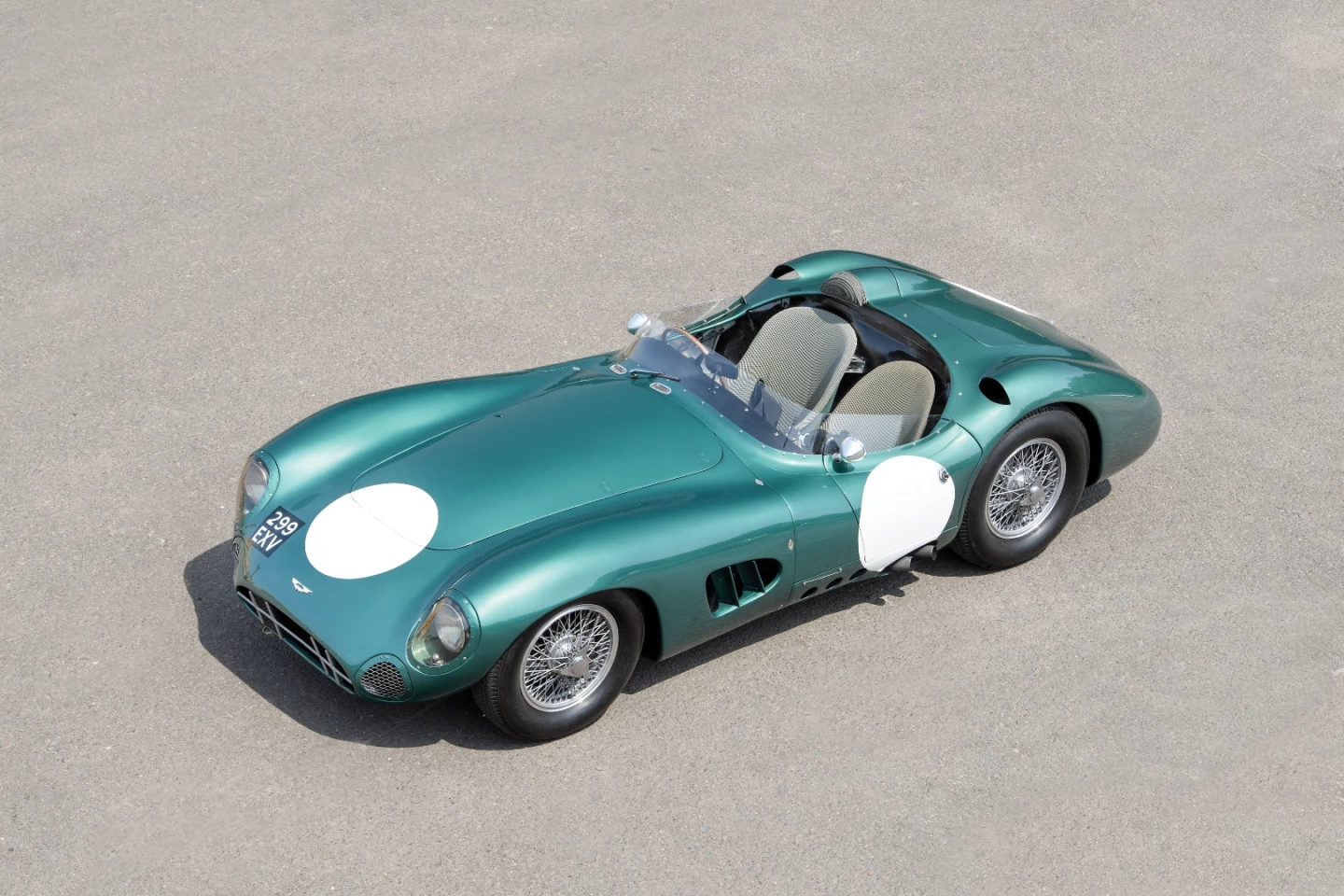
This is the first DBR1, the embodiment of Cutting's design, and the car which will sell at RM-Sotheby's Monterey auction on August 19 during the Monterey Car Week leading up to the world-renowned Pebble Beach Concours d'Elegance.
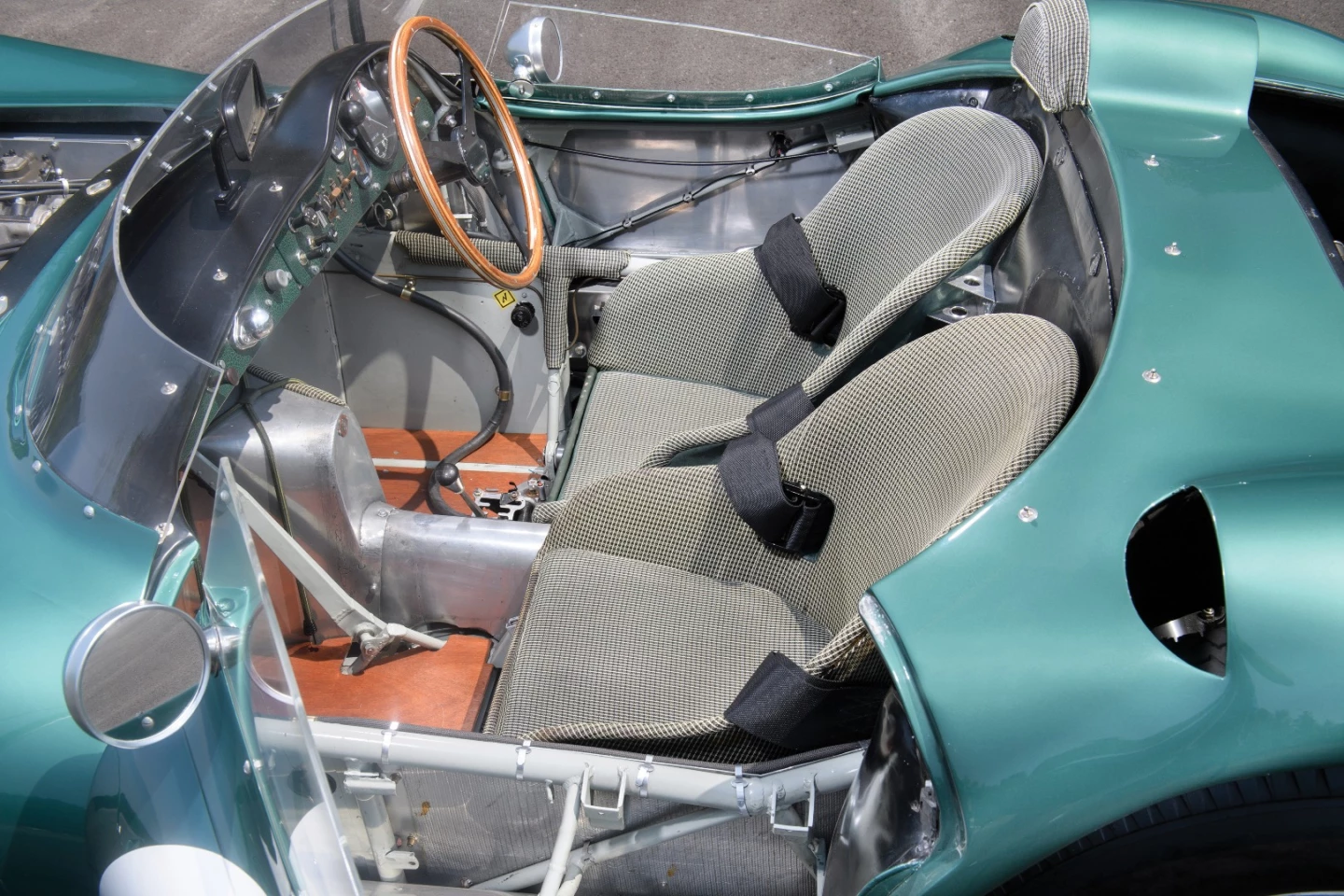
The lightweight spaceframe chassis construction enabled the DBR1 to weigh in at 1,765 lb (801 kg), the same weight as its period rival the Ferrari 250 Testa Rossa.
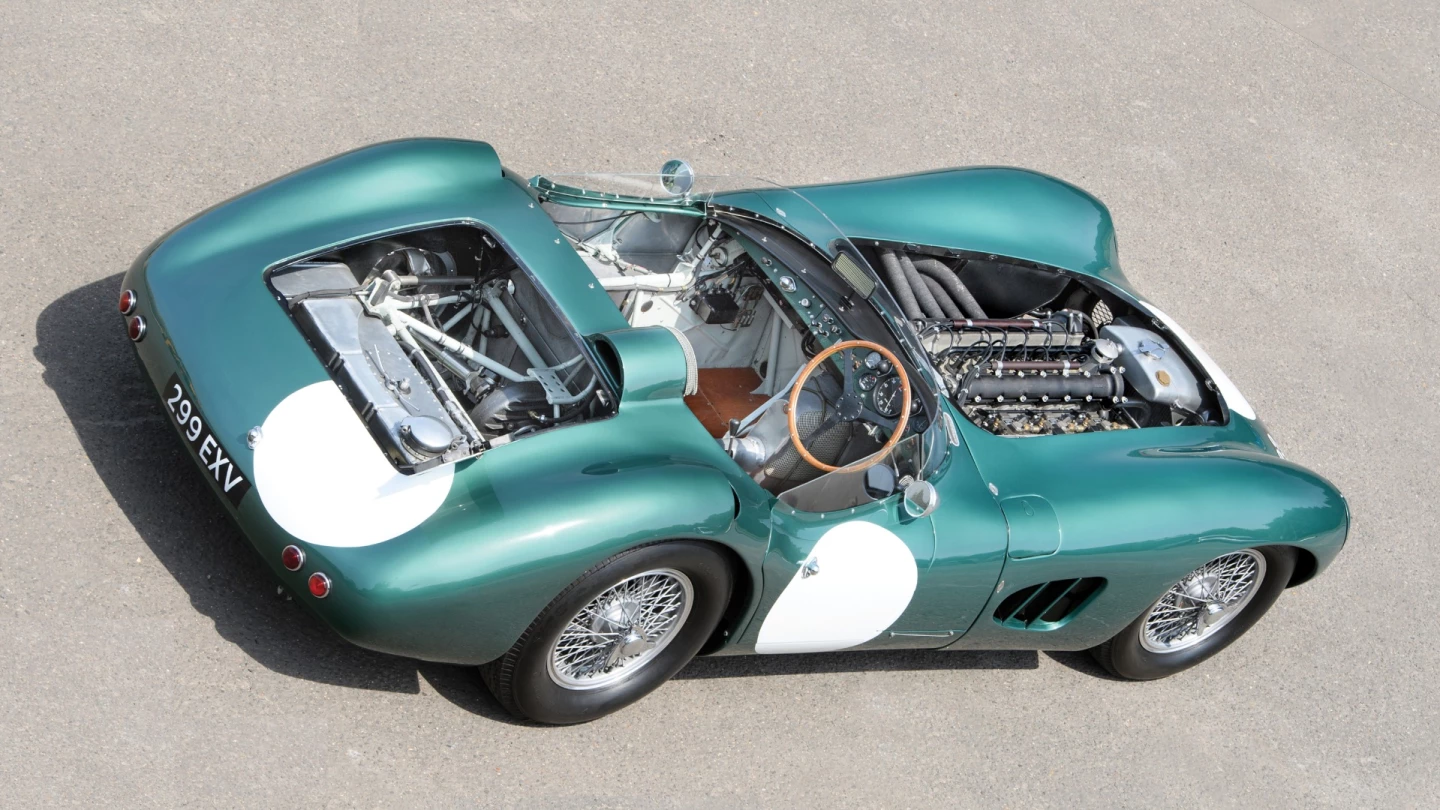
The spaceframe chassis enabled 80 kg to be trimmed from the weight of the road-based Aston Martin DB3S racers, but most importantly, it offered a much stronger chassis with greater rigidity.

The initial DBR1 engine was a 2.5 liter six, but the ideal balance was found when a 250 hp revision of the DB3S three liter six was fitted for the 1957 season. The victories began to happen from that point and the pinnacle was the 1959 24 Hours of Le Mans where the DBR1 finished first and second, with a string of Ferrari 250 GTs some 25 laps astern. Ferrari's stranglehold on the World Sportscar Championship had only been broken once before since the inception of the series (by the Mercedes-Benz 300 SLR) so the win for Aston Martin was a key moment in racing history.
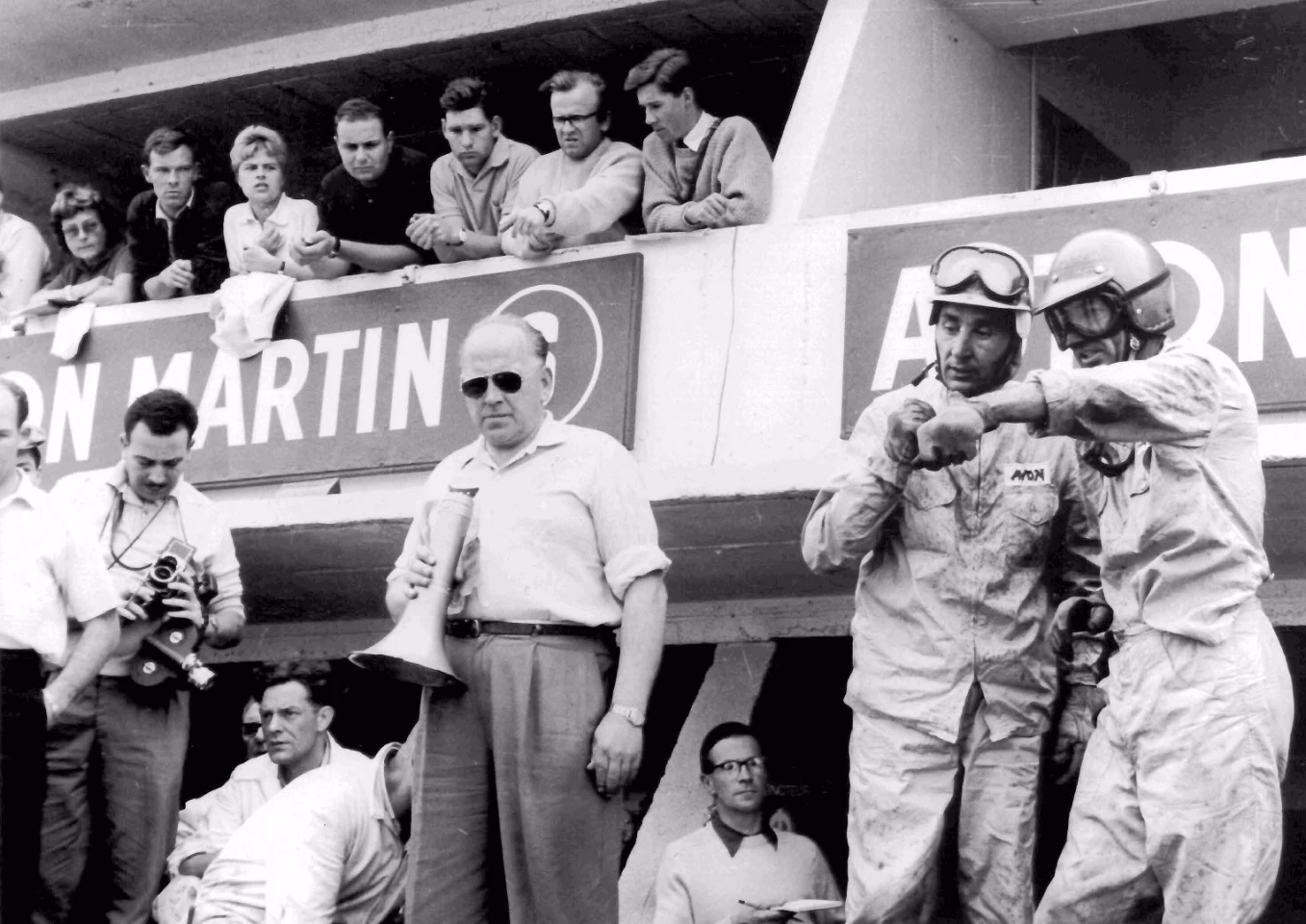
David Brown's magic was by then paying dividends across the company and while the DBR1 was beating Ferrari's Testa Rossa and Porsche's 718 RSK on the racetrack, Aston Martin's DB (David Brown) lineage produced the fastest road car in the world three times in a row in the form of the 1958 DB4, 1959 DB4 GT and 1960 DB4 GT Zagato.
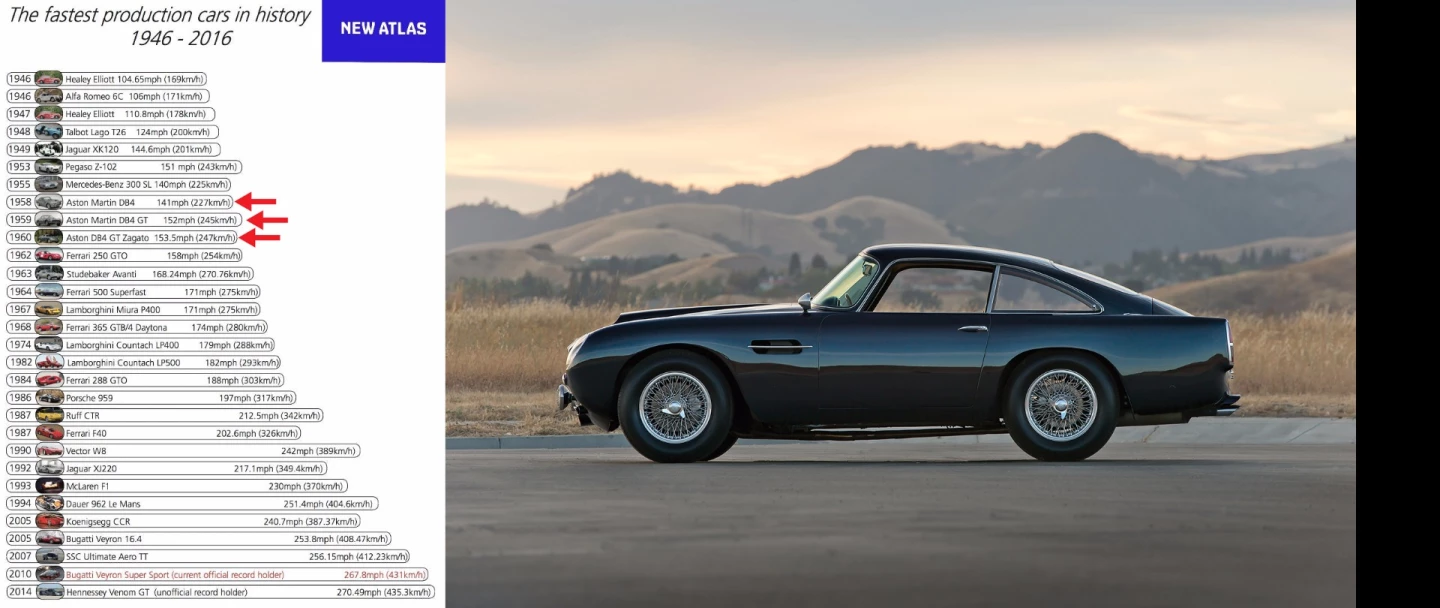
The Aston Martin DB4 (above next to chart) was produced from 1958 until 1963, with its 3670 cc DOHC six cylinder engine producing 240 hp and propelling it to a top speed, as tested by Autocar magazine in 1961, of 141 mph (227 km/h).
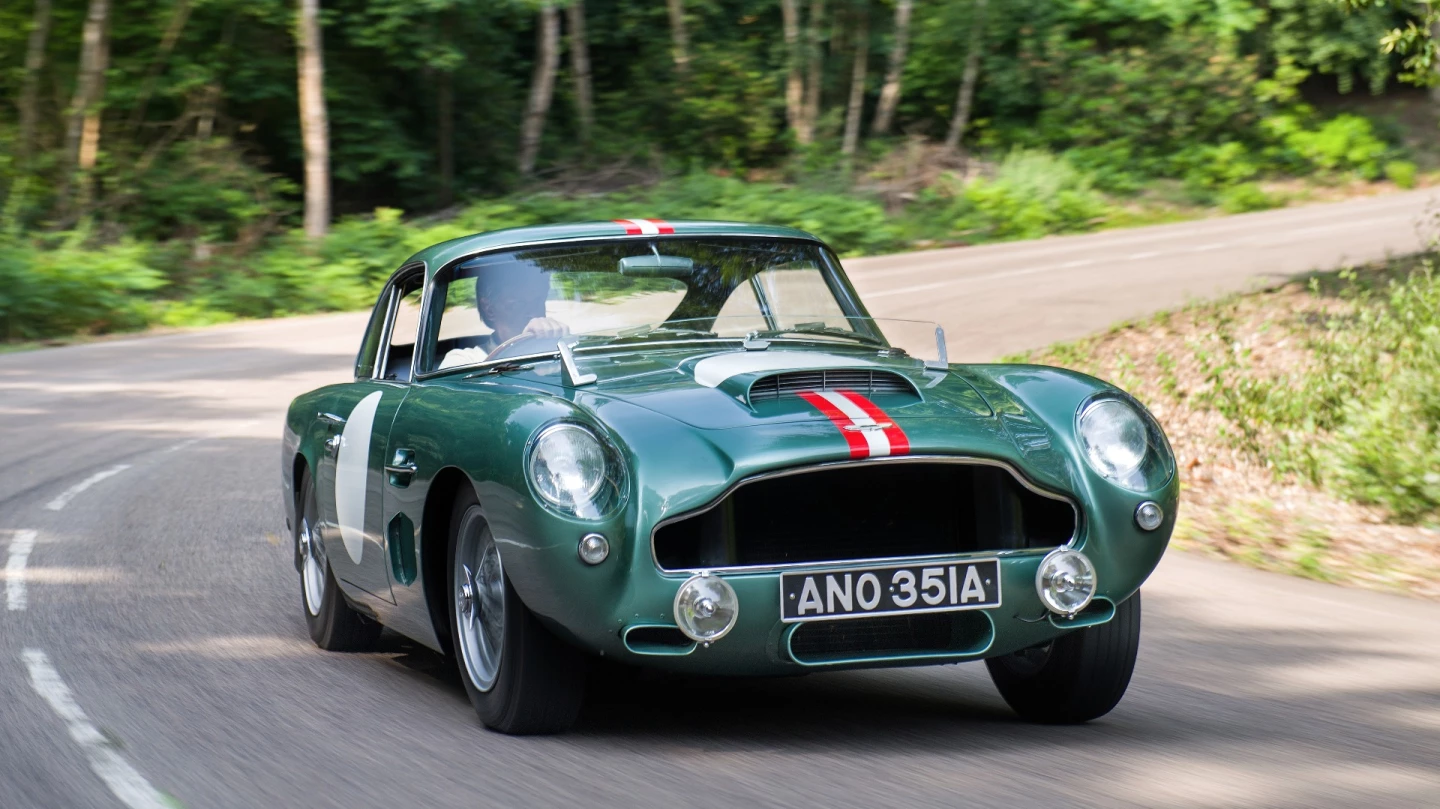
The DB4 GT (above) was a lighter, higher-performance version of the DB4 introduced in September 1959, and timed at 152 mph (245 km/h) by Autosport in December 1961. The aluminum body was thinner, the wheelbase was shorter, and the range-topping 3750 cc engine produced 302 hp.
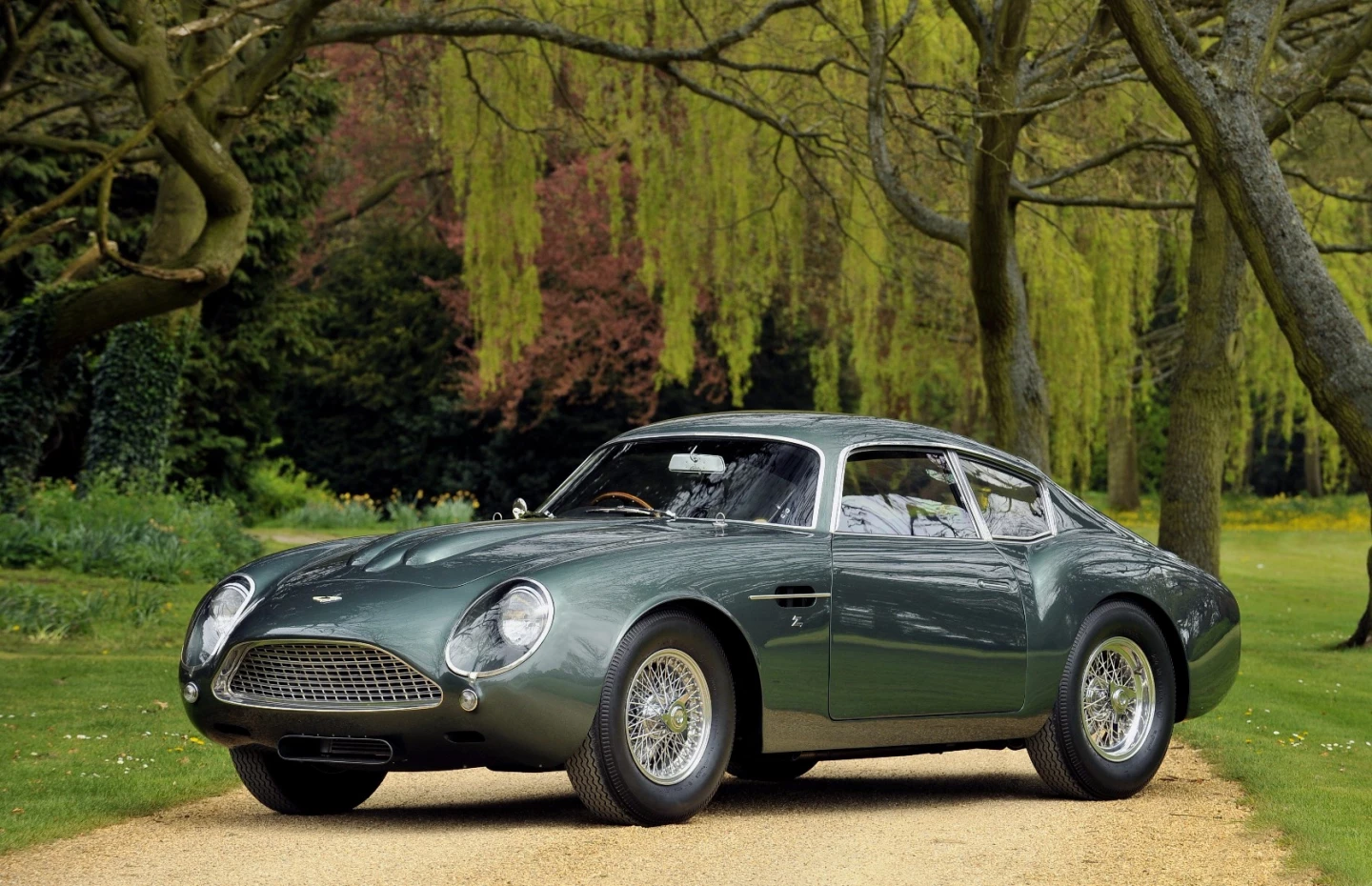
The Aston Martin DB4 GT Zagato (above) was introduced at the London Motor Show in October 1960, being a lightened 314 hp (234 kW) DB4 GT with Zagato styling. It was timed at 153.5 mph (247 km/h). For more see our feature article on the fastest roadcars in history.

Just to cap off a few dream years of achievement, in a stroke of promotional genius, the Aston Martin DB5 was chosen as James Bond's car for the movie Goldfinger and became one of the first movie "hero cars." The dream car of a generation was James Bond's gadget-festooned Aston Martin when Goldfinger was released in September 1963 ... then again in Thunderball (1965).
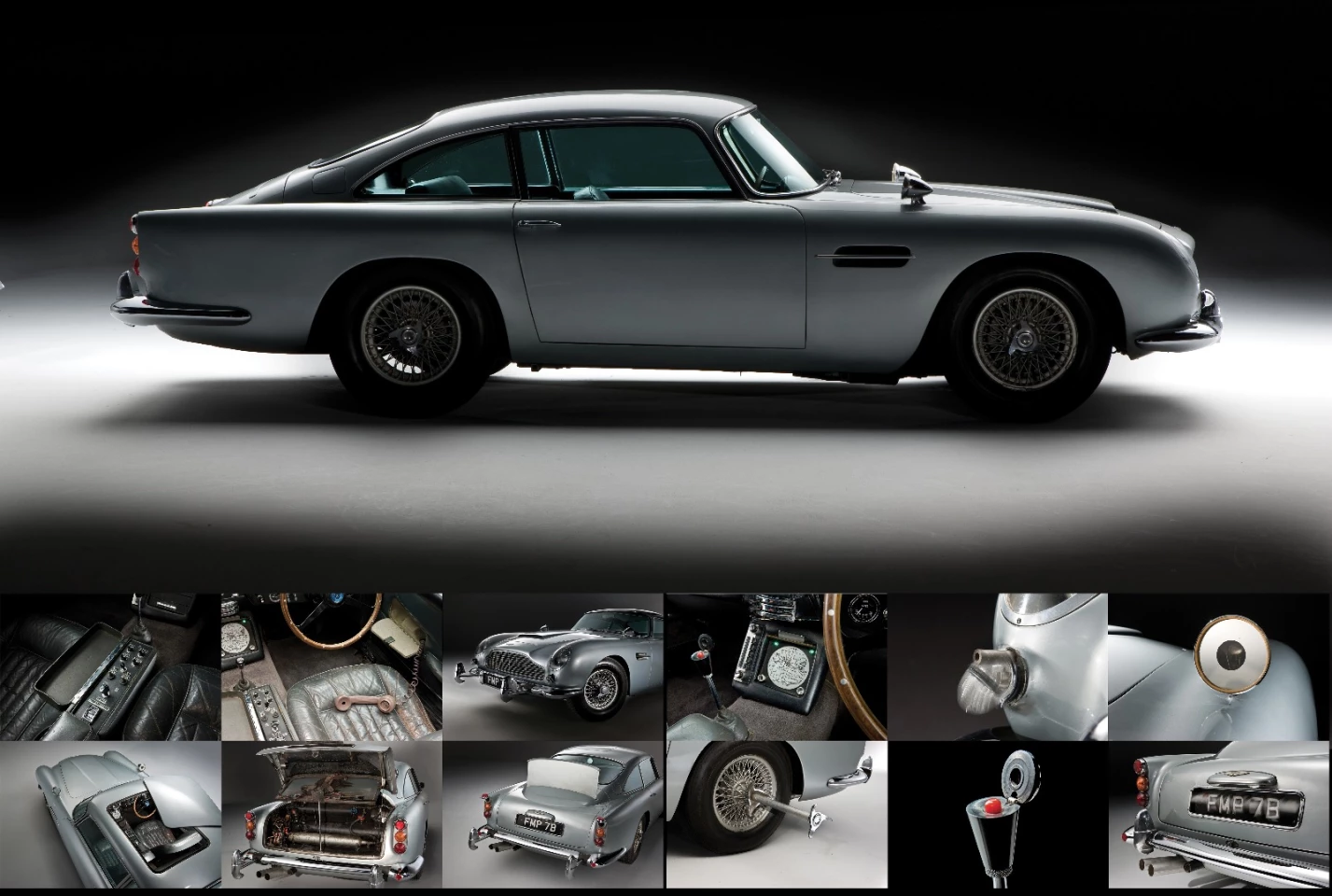
We've written about this car many times in the last 15 years, and it is a perennial favorite with readers. It was the best known automobile of the era when Ian Fleming's James Bond books became box office hits during the 1960s.
The weaponized Aston Martin DB5 presented by gadgetmeister Q to James Bond (Sean Connery) had .30 calibre Browning machine guns behind the front indicators, retractable tire slashers, a retractable rear bullet proof screen, a radio telephone concealed in the door, a radar scanner with a tracking screen in the cockpit, a passenger ejector seat, an oil slick and smoke screen generator and revolving number plates. The hero car from the movie, fitted with all these features, sold for $4.6 million in 2005.
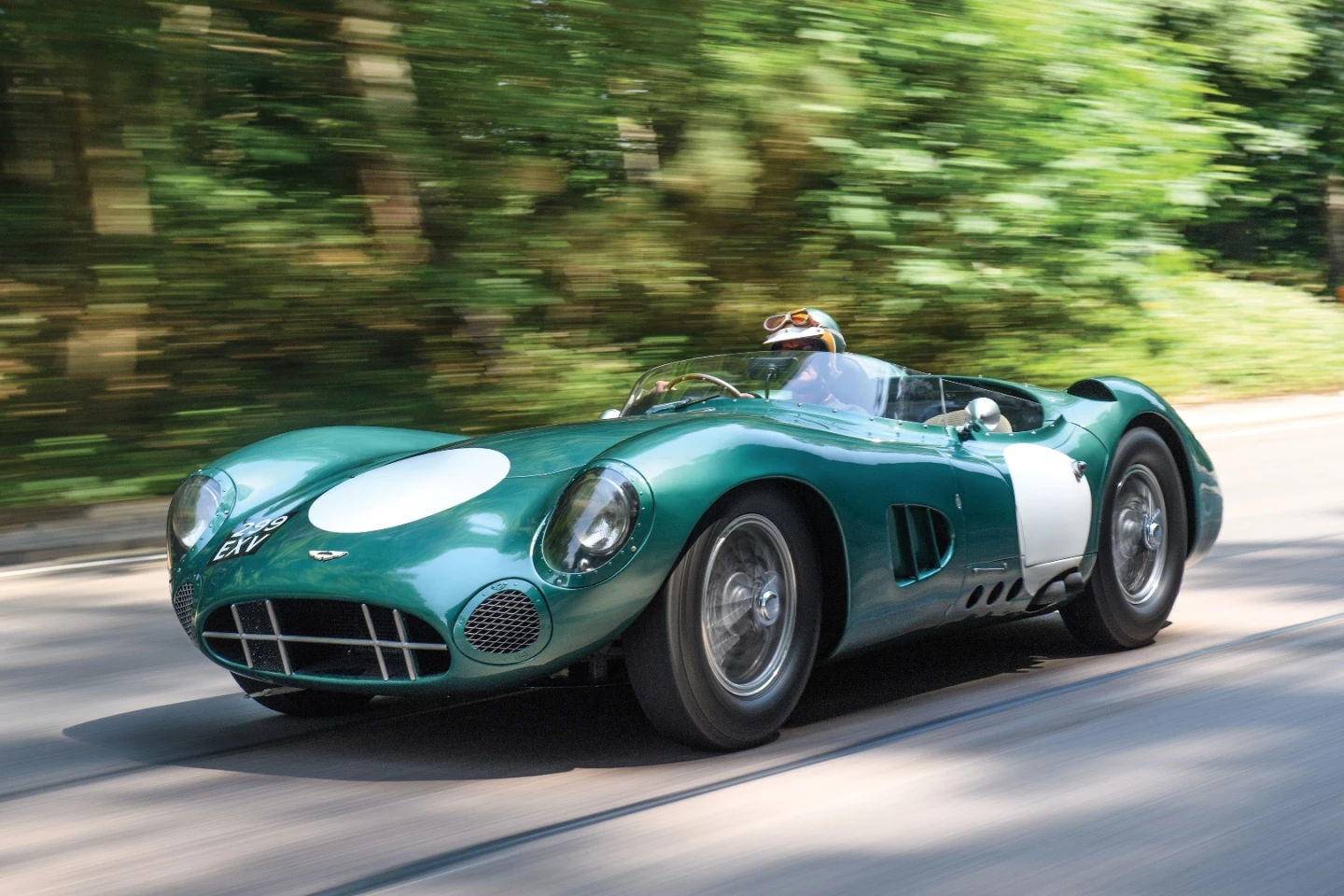
What's it worth?
The glory years of Aston Martin coincided with David Brown and as that success was precipitated by the DBR1, so RM-Sotheby's claim of this being the most significant Aston Martin ever made rings true.
That claim will be thoroughly tested during the 2017 Monterey Car Week festival on August 18-19, 2017 when the car goes to auction. It stands to reason that the most significant car would attract the most money at auction, but it's complicated, and provenance is the key. Most of the DBR1s race wins, including the 1959 Le Mans race were achieved by DBR1/2, which reportedly sold for £20 million ($32,298,000) through Talacrest in 2012.
We don't count private sales because they can't be verified, but only 37 cars have ever sold at auction for more than US$10 million, seven of those for more than $20 million, and three of those for more than $30 million ... and an identical car to this has already sold for more than $30 million outside the auction system.
A sale price "in excess of $20 million" is being quoted for DBR1/1 but the upper limit might be well above that. So if it sells above $20 million, it will become one of eight to sell above that amount ... a top 10 of all time car.
The auction record for any Aston Martin ($14.3 million for a DB4 GT Zagato) will fall if this car sells, and the record for any British car ($21.78 million for a Le-Mans-winning Jaguar D-Type) will probably be broken too, at least judging from the Talacrest sale of the DBR1/2 sister car. So although DBR1/1 and DBR1/2 are identical other than the stamp (below), will DBR1/1 sell for $10 million less than the sister car? Maybe not ... 2012 is a long time ago in auction years. The market might be soft, but cars such as this don't come along very often.
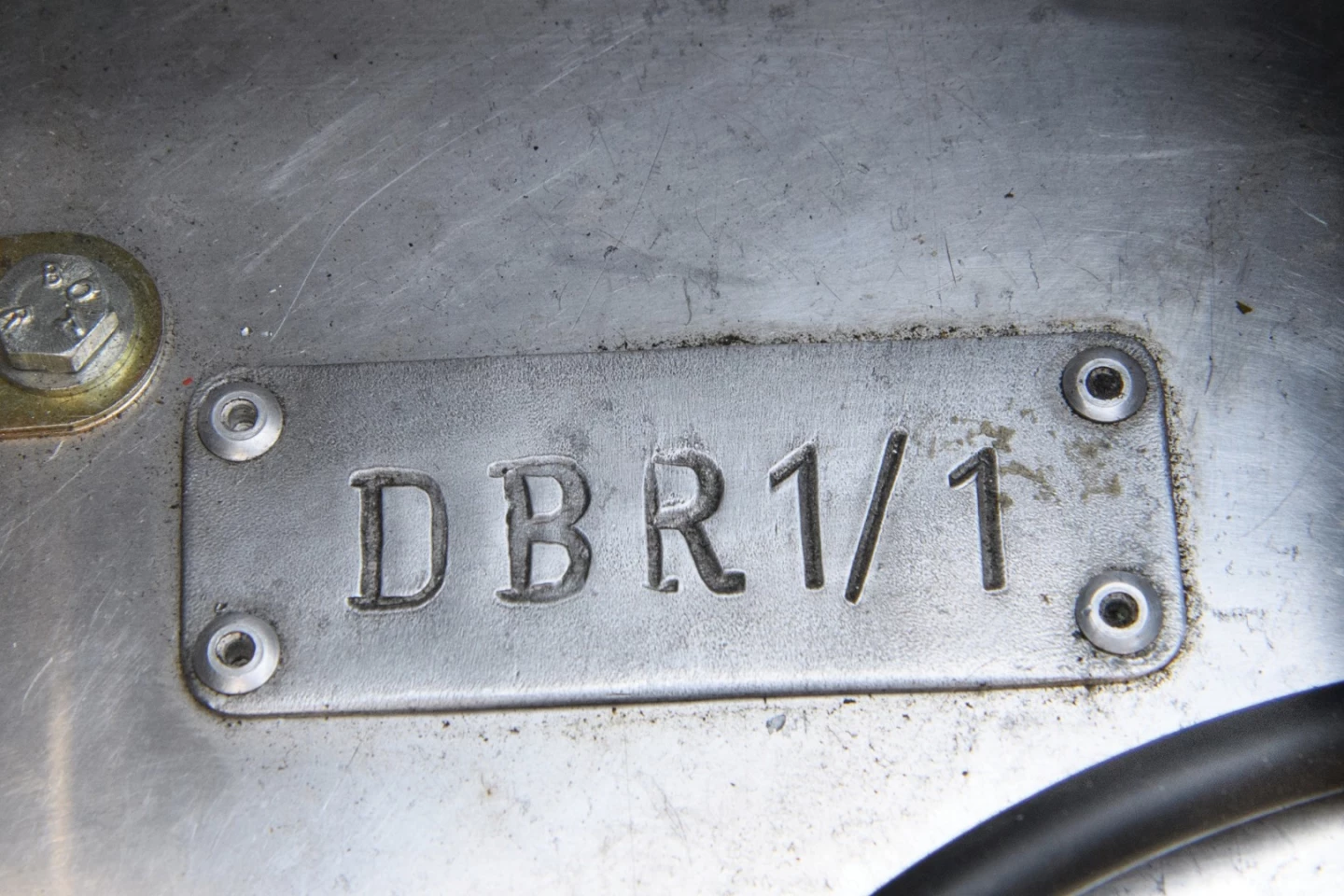
This particular car did not win Le Mans. It is however, the initial hand-crafted manifestation of Ted Cutting's design and David Brown's dream, and if someone values that provenance enough, it might break all the records.
Our detailed view of the 100 most expensive cars of all time offers some interesting perspective on the possibilities. One of the DBR1's contemporaries, the Ferrari 250 Testa Rossa, held the outright auction record just a few years ago, and sports cars from the same 1950s sportscar racing arena populate the $15 million plus ranks with examples including the Ferrari 335S Spider, Ferrari 290 MM, Ferrari 375-Plus, Jaguar D-Type and slightly later, the Ferrari 250 GTO. The first DBR1 should push into that territory.
Monterey Car Week is not far away – stay tuned for more auction previews.
Auction link: RM Sotheby's



































